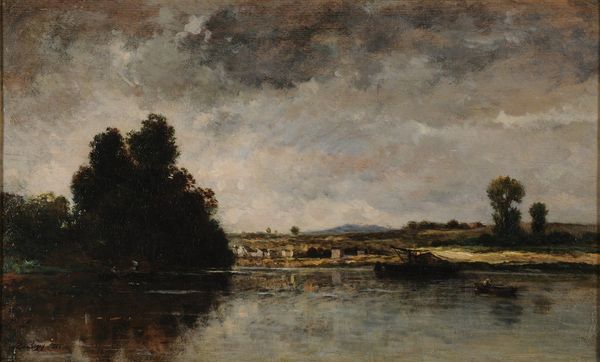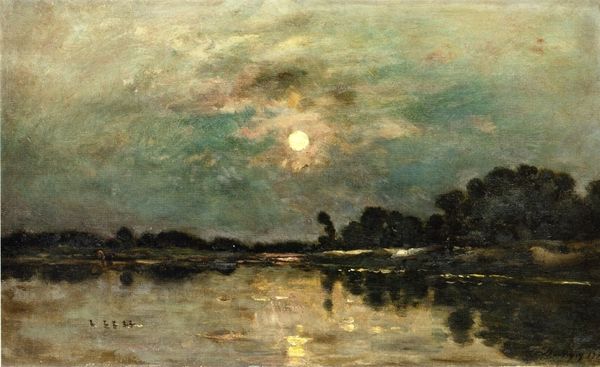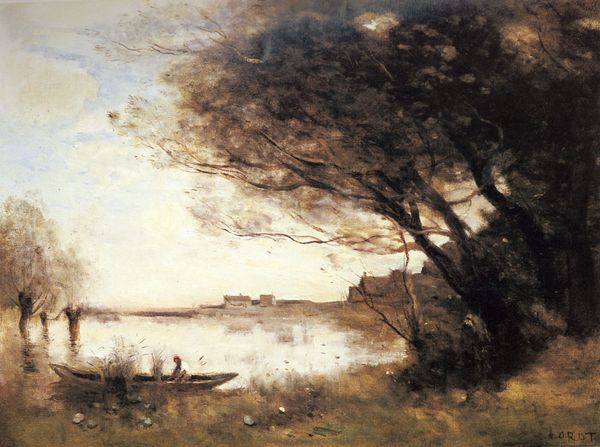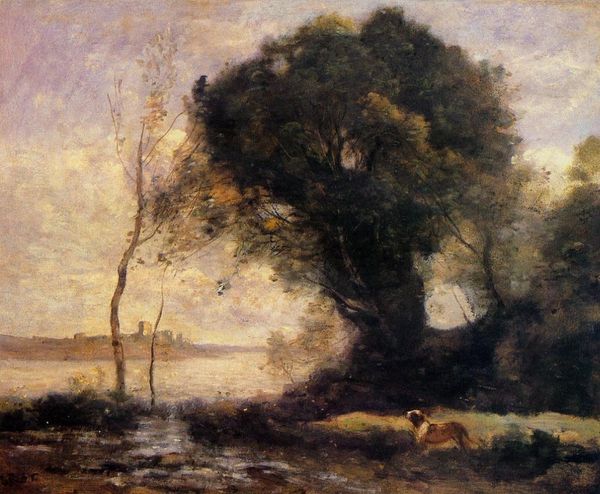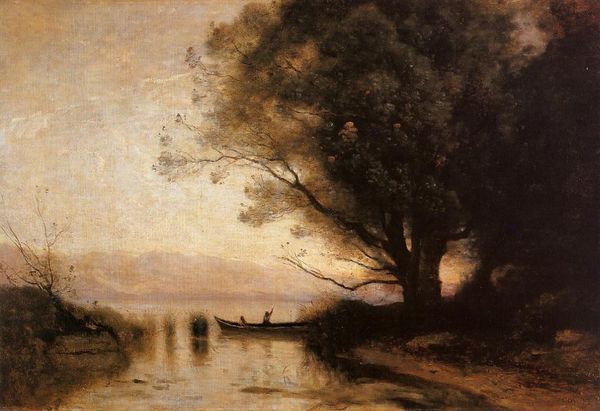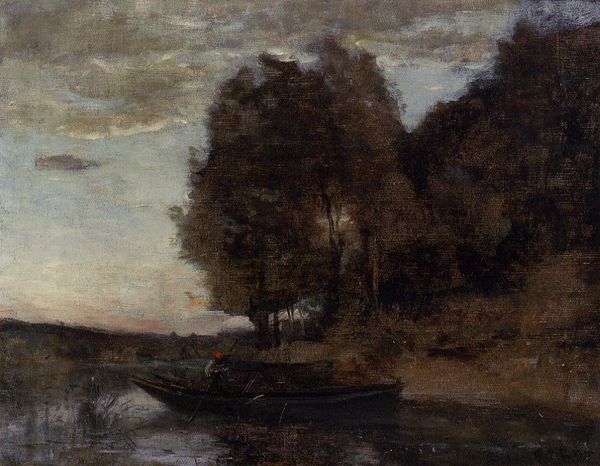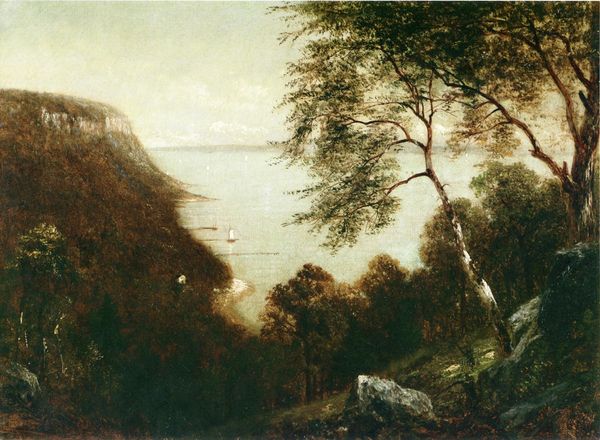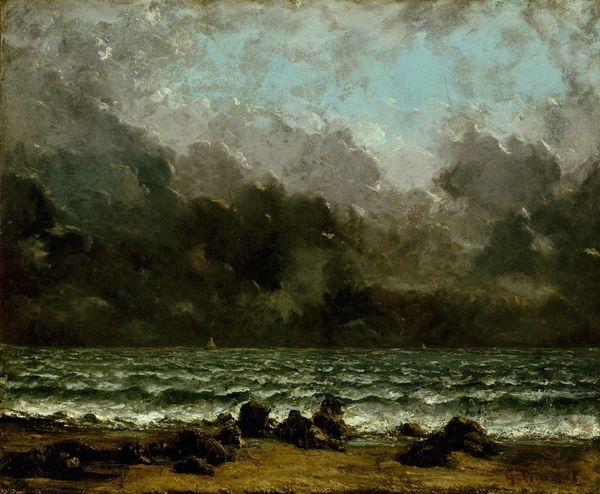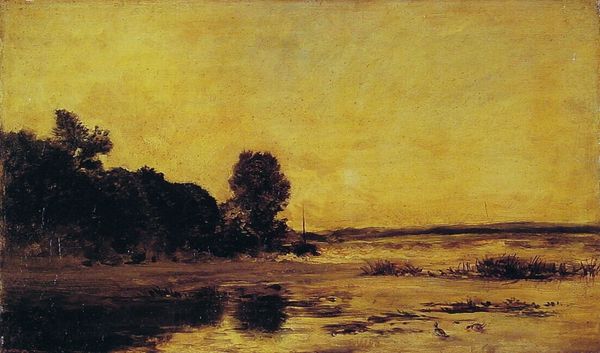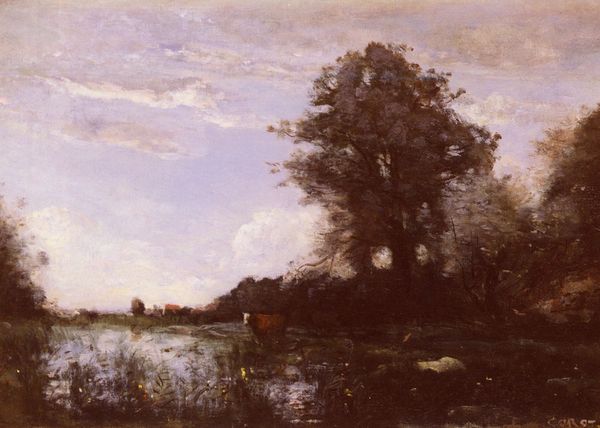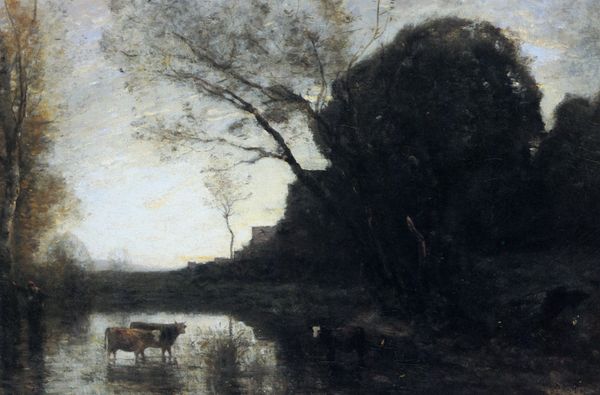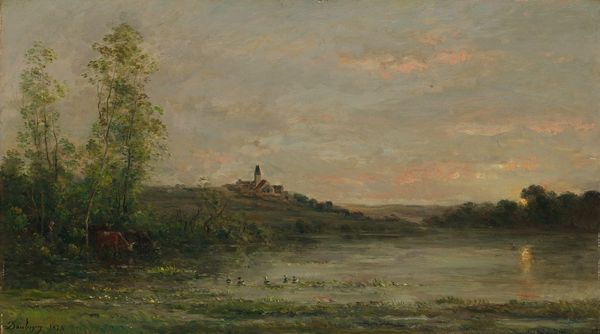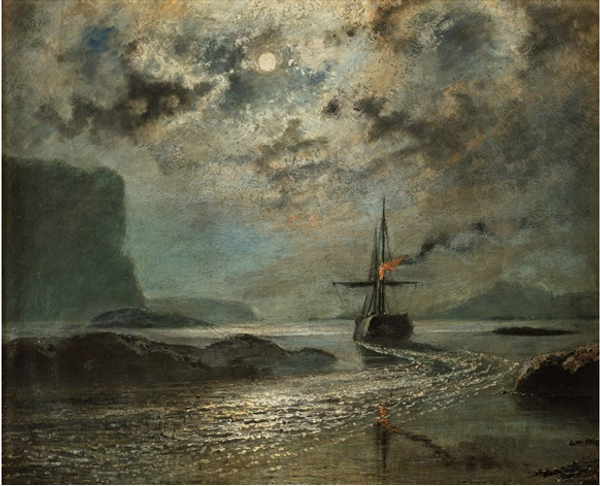
Dimensions: 32.4 x 38.1 cm
Copyright: Public domain
Curator: Gustave Courbet's "Lake Geneva before the Storm," created in 1877, presents a compelling scene rendered in oil paint. It’s a captivating landscape from his late career, showcasing the lake’s dramatic transformation. Editor: It strikes me immediately as turbulent, even ominous. The looming mountain, the dark sky... it feels almost suffocating, as if nature is about to unleash something immense. The lone boat seems incredibly vulnerable. Curator: Courbet often challenged artistic conventions, opting for realism and depicting nature with unfiltered intensity. Here, the visible brushstrokes and impasto create a palpable sense of movement, capturing the fleeting moments before a storm. He spent time exiled in Switzerland around this time; the social climate impacting his worldview is certainly on display. Editor: Absolutely, there’s a visceral quality to it. It feels relevant, reflecting our current anxieties about environmental instability. The artwork can encourage conversation on human impact on the environment, particularly focusing on climate change-induced disasters and how we must recognize this impact in marginalized communities. It seems he found a melancholic freedom observing the raw power of nature in exile. Curator: The composition is interesting, too. The division of the canvas into thirds—sky, mountain/land, and water—creates a sense of balance, albeit a tense one. The way the light catches the water hints at a brighter scene struggling to break through the darkness. Consider that during Courbet’s life, art was increasingly intertwined with political messages. Editor: It's difficult to ignore how the looming storm echoes larger social anxieties and feelings of disenfranchisement felt by many at that moment. One could read it as a metaphor for personal and collective experiences of social injustice—and this connection extends beyond art into everyday life. This painting is so evocative, pushing beyond purely aesthetic appreciation. Curator: It makes me think about the public's understanding of realism at the time, the function and purpose, versus the idealized landscapes more traditionally exhibited. His artistic legacy stems from this shift toward art as direct engagement with life's complexities. Editor: And what a potent legacy it is. I find myself dwelling on the vulnerability, the beauty tinged with threat, it certainly makes you stop and think. Curator: Precisely. It's a reminder of the power art has to capture both the grand scale and most fragile moments in nature and society.
Comments
No comments
Be the first to comment and join the conversation on the ultimate creative platform.
